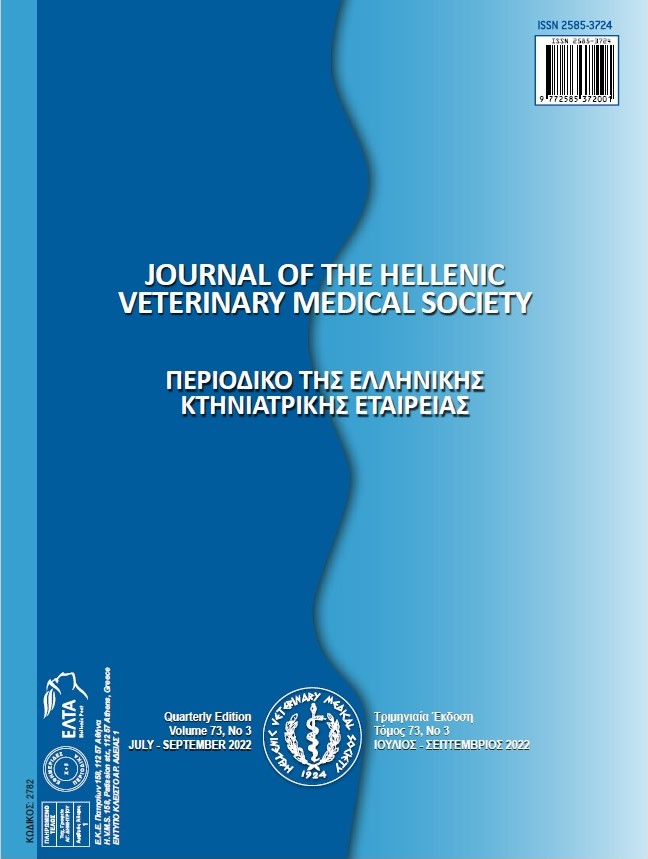Structural Features, Biosecurity and Animal Welfare Assessment in Sheep Farms in Yozgat Province, Türkiye
Περίληψη
In this study, it was aimed to evaluate the sheep production enterprises in Yozgat province located in Central Anatolia Region of Türkiye in terms of production characteristics, general characteristics, biosecurity practices and animal welfare. The material of the study consisted of questionnaire, observation and measurement data obtained from 180 sheep production enterprises in Yozgat province. In the study, the general characteristics of the enterprises, flock management practices, shelter characteristics, feeding practices, health protection practices, biosecurity practices and welfare assessment were determined. As a result, sheep production in Yozgat province is mostly carried out with traditional methods and in the form of family enterprises. It is seen that some practices in the enterprises have deficiencies in terms of compliance with biosecurity parameters. In terms of welfare, according to the protocol developed from the ANI 35 L system, it was determined that the sheep farming enterprises in Yozgat province are mainly in the medium score categories in terms of protection from heat, protection from cold, suitable light and ventilation and number of drinkers from the parameters of shelter conditions; medium in terms of parameters other than milking parlour in terms of structure and equipment condition parameters; and high in terms of animal health parameters.
Λεπτομέρειες άρθρου
- Πώς να δημιουργήσετε Αναφορές
-
Aslan, A., & Tüfekci, H. (2025). Structural Features, Biosecurity and Animal Welfare Assessment in Sheep Farms in Yozgat Province, Türkiye. Περιοδικό της Ελληνικής Κτηνιατρικής Εταιρείας, 75(4), 8229–8240. https://doi.org/10.12681/jhvms.36157
- Τεύχος
- Τόμ. 75 Αρ. 4 (2024)
- Ενότητα
- Research Articles

Αυτή η εργασία είναι αδειοδοτημένη υπό το CC Αναφορά Δημιουργού – Μη Εμπορική Χρήση 4.0.
Οι συγγραφείς των άρθρων που δημοσιεύονται στο περιοδικό διατηρούν τα δικαιώματα πνευματικής ιδιοκτησίας επί των άρθρων τους, δίνοντας στο περιοδικό το δικαίωμα της πρώτης δημοσίευσης.
Άρθρα που δημοσιεύονται στο περιοδικό διατίθενται με άδεια Creative Commons 4.0 Non Commercial και σύμφωνα με την άδεια μπορούν να χρησιμοποιούνται ελεύθερα, με αναφορά στο/στη συγγραφέα και στην πρώτη δημοσίευση για μη κερδοσκοπικούς σκοπούς.
Οι συγγραφείς μπορούν να καταθέσουν το άρθρο σε ιδρυματικό ή άλλο αποθετήριο ή/και να το δημοσιεύσουν σε άλλη έκδοση, με υποχρεωτική την αναφορά πρώτης δημοσίευσης στο J Hellenic Vet Med Soc
Οι συγγραφείς ενθαρρύνονται να καταθέσουν σε αποθετήριο ή να δημοσιεύσουν την εργασία τους στο διαδίκτυο πριν ή κατά τη διαδικασία υποβολής και αξιολόγησής της.




